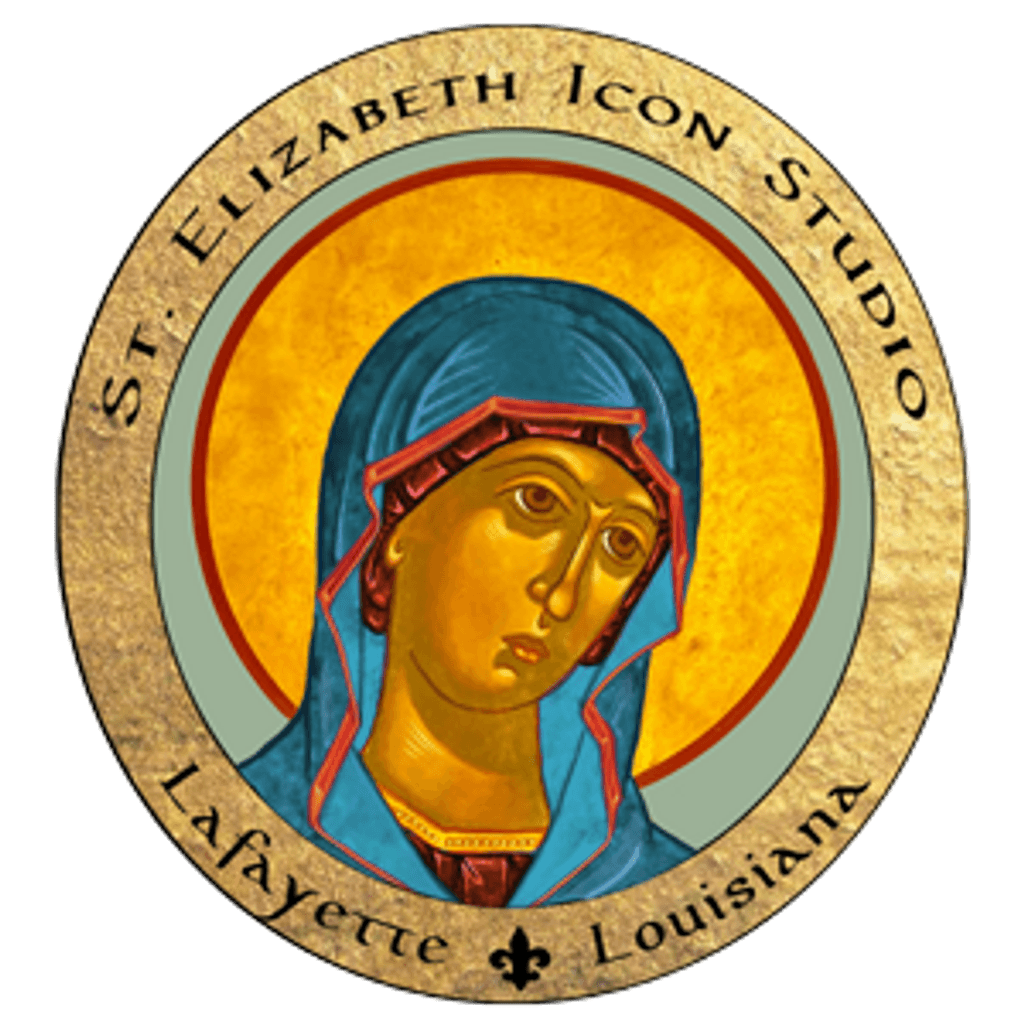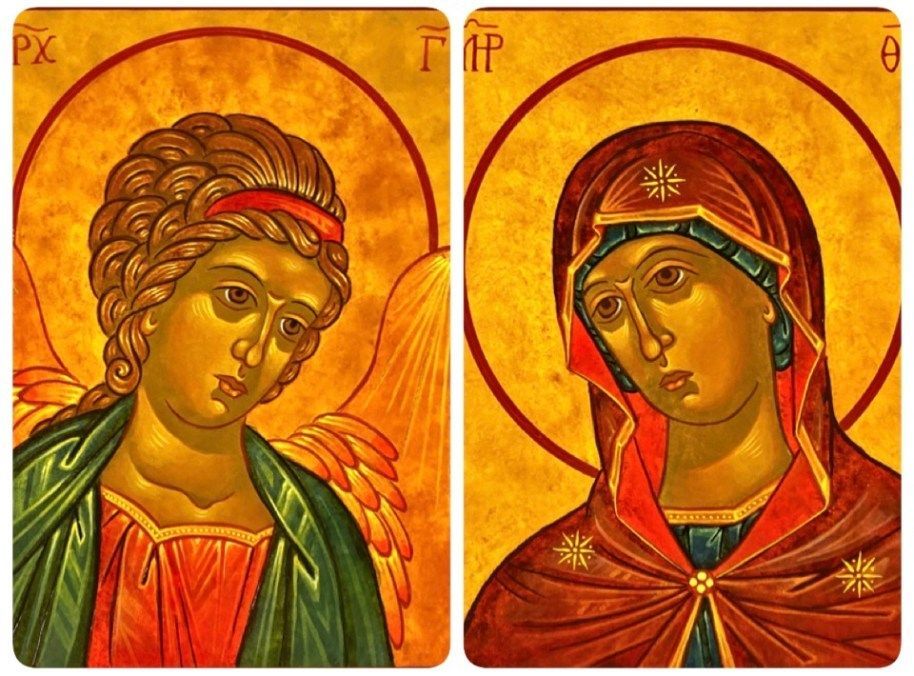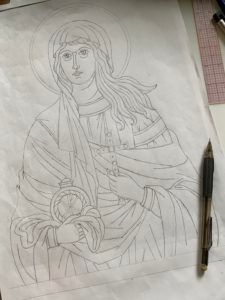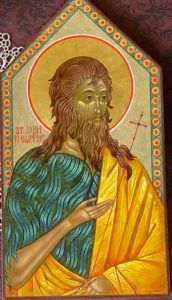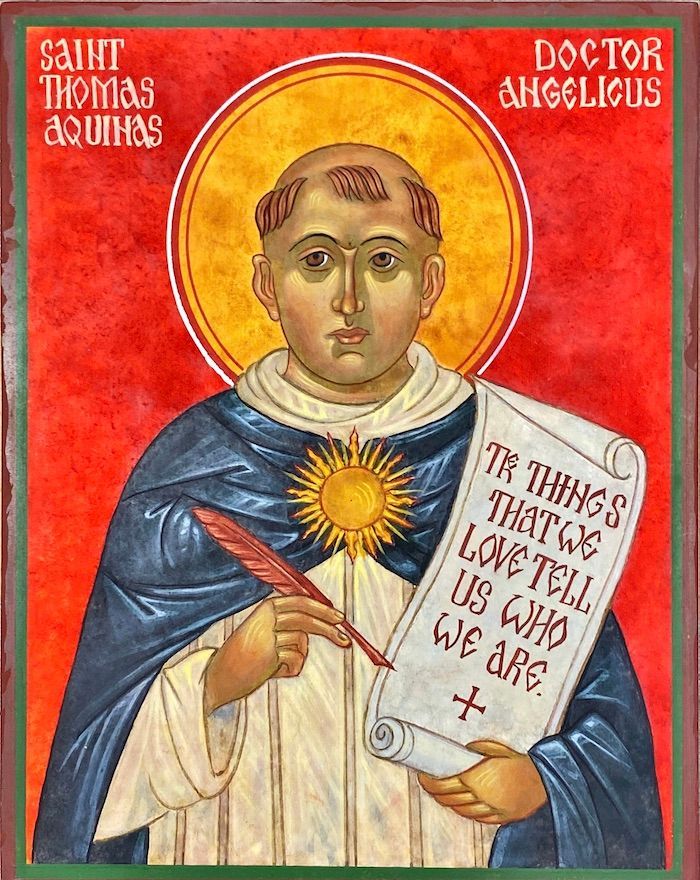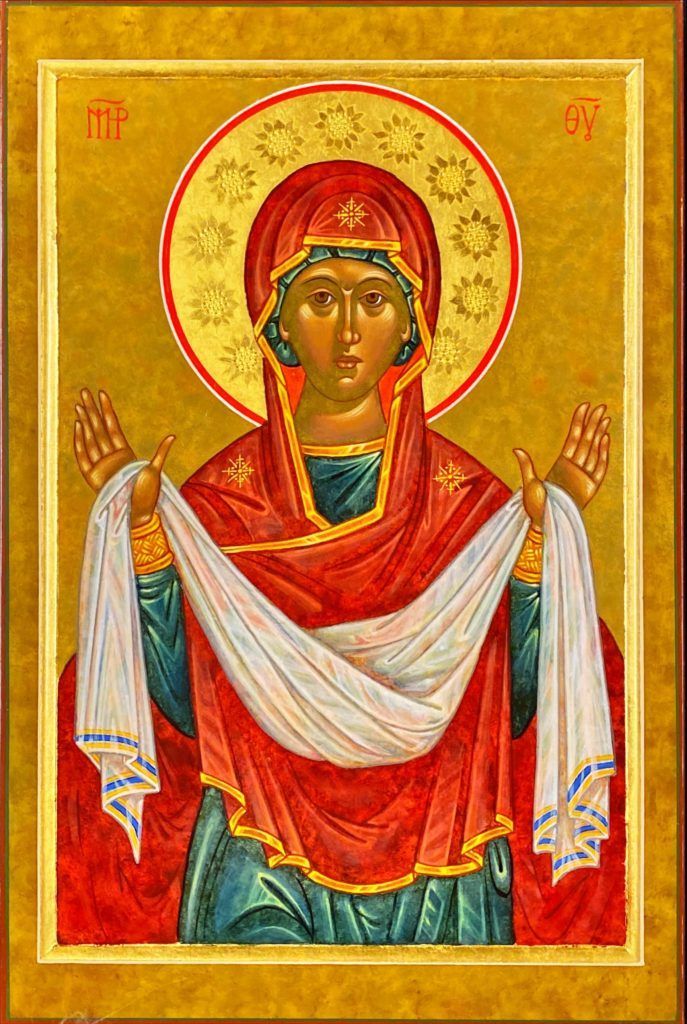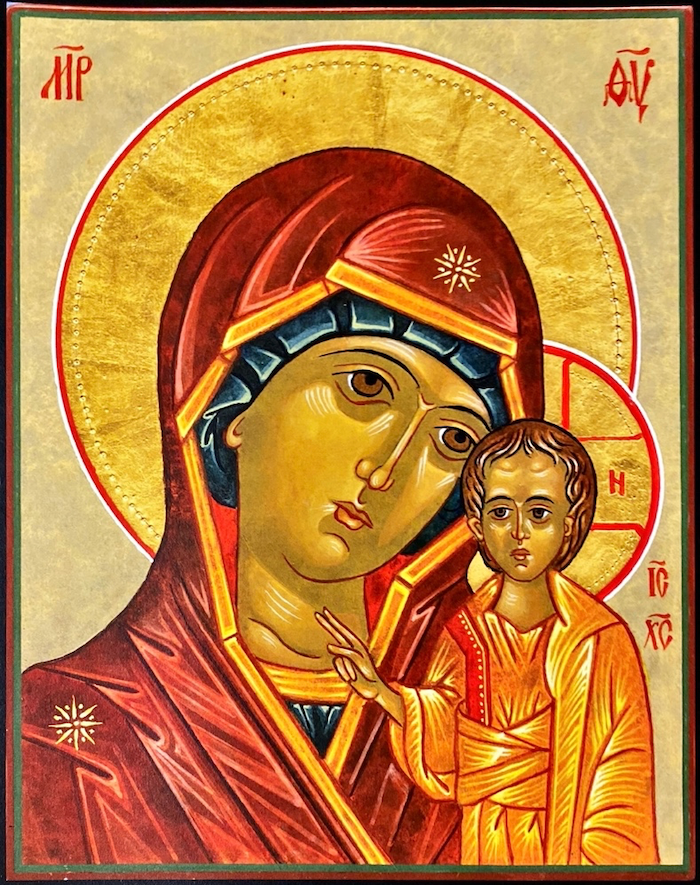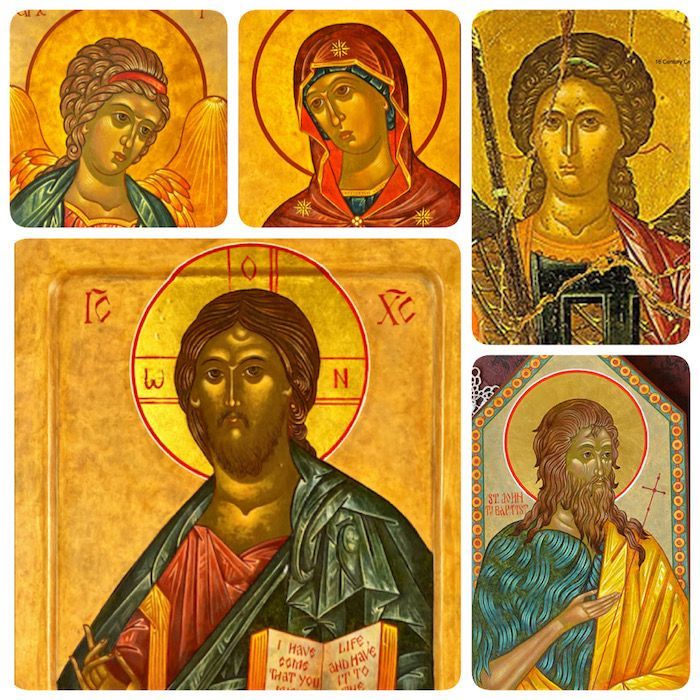St. Francis of Assisi — Series starts February 2024
St. Francis of Assisi — Series starts February 2024
A standing figure of St. Francis of Assisi, with the walls and buildings of Assisi in the background, will be our 12-Week Intermediate Class Project beginning in February 2024. This class will focus on the development of the standing figure, including the techniques of painting a smaller, more graphic face. We will also study the principles of painting medieval architecture and other incidental elements, such as vegetation and inanimate objects.
In developing the drawing for our icon of St. Francis, we will turn to some of the oldest images and traditions about the saint. Francis was born in 1182 and died in 1226. He was canonized in 1228, less than 2 years after his death. That same year the Franciscan Thomas of Celano wrote, by order of the Pope, a biography of Francis, the Vita prima. Construction also began on a monumental new church in his honor, the Basilica of St. Francis of Assisi. In 1230, Francis’ body was transferred to the new basilica. In 1246 Tommaso compiled a Vita segunda, based on information gathered from the saint’s first companions. In 1260 St. Bonaventura wrote a new biography, the Legenda major, which became the Franciscan Order’s official biography of St. Francis.
During those first decades following his death, Francis’ life was recorded not only in written biographies but also in paintings. Between 1235 and 1255, a number of panel icons of the standing figure of the saint were painted. Some of these images included various scenes from his life. One of these, titled St. Francis and Four of His Miracles, is pictured below. It was painted by an artist known simply as the “Master of the Treasury” shortly after the consecration of the basilica in 1253. The buildings in this ancient icon provide colorful models for the buildings of Assisi in our icon.
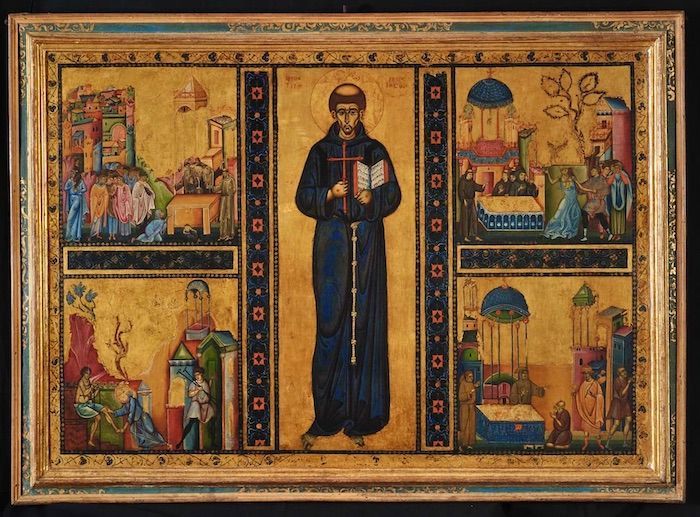
Italia, Umbria, Perugia, Assisi, Basilica di San Francesco in Assisi, Museo del Tesoro
The earliest frescos in the basilica were painted before 1263 by another anonymous artist, probably a Franciscan friar, known only as the “St. Francis Master.” He also painted the panel icon pictured below, St. Francis between Two Angels, circa 1260, which hangs today in the Museum of the Portiuncula. The wood panel on which this image is painted was the bottom of the mortuary casket that safeguarded Francis’s body in its temporary burial place before his remains were moved to the basilica.
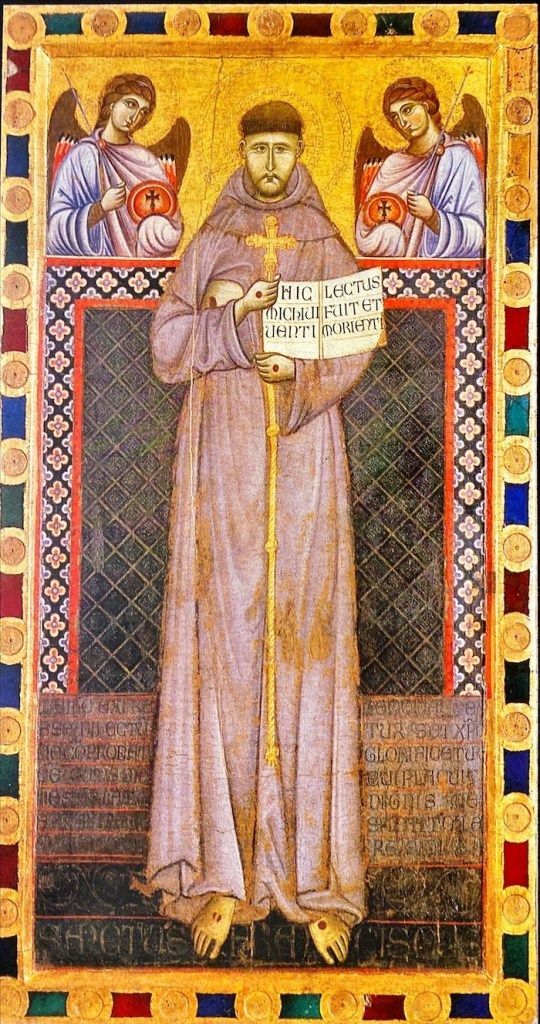
St. Francis between Two Angels, the Museum of the Portiuncula
In 1280, Pope Nicholas III commissioned the Florentine painter Cimabue to undertake extensive painting in the basilica. Cimabue’s frescos in the basilica are said by some to be his greatest work. One of the most beautiful of these paintings is the Madonna with the Divine Child pictured below. The Virgin and Child are seated on a throne and are surrounded by angels, with Francis standing on the side. Critics say that this portrait of Francis is more faithful than any other to the physical description of Francis made by his first biographer, Thomas of Celano. This will be one of our primary models for the figure of the saint himself.

Madonna with the Divine Child
Not only will we draw from the ancient paintings in developing our icon, but we will also draw from some of the oldest of the Franciscan traditions. All Franciscans throughout the world celebrate August 2 as the Feast of Our Lady of the Angels of the Portiuncula. When Francis had his mystical vision in 1205 and heard the call of Christ to “repair my house, which is falling into ruins,” Francis set about restoring several ruined chapels in Umbria. The third chapel he repaired was the Portiuncula or the “Little Portion,” dedicated to St. Mary of the Angels. The abandoned chapel and the surrounding land was owned at the time by the Benedictines of Mount Subasio. They agreed to give the chapel and the land to Francis and his followers for their use, but because of Francis’ vow of poverty, he was hesitant to own any property. Instead, an agreement was reached whereby the Franciscans would “rent” the land and chapel from the Benedictines for an annual fee of a basket of fish from the nearby Tescio river.
The Portiuncula became the home base of the Franciscan order. It was here that Francis received Clare into the Order on Palm Sunday evening in 1212, before Clare and her companions moved to San Damiano to establish a separate monastery for women. Francis traveled extensively doing missionary work during his lifetime, but it was to the Portiuncula that he returned to die in 1226. To this very day, Franciscans throughout the world consider the Portiuncula their home, and every year on August 2 in Assisi the Franciscans send the Benedictines a basket of fish for their “rent payment” for their “little portion of land”!
You will notice a basket of fish in our icon. Now you know why!
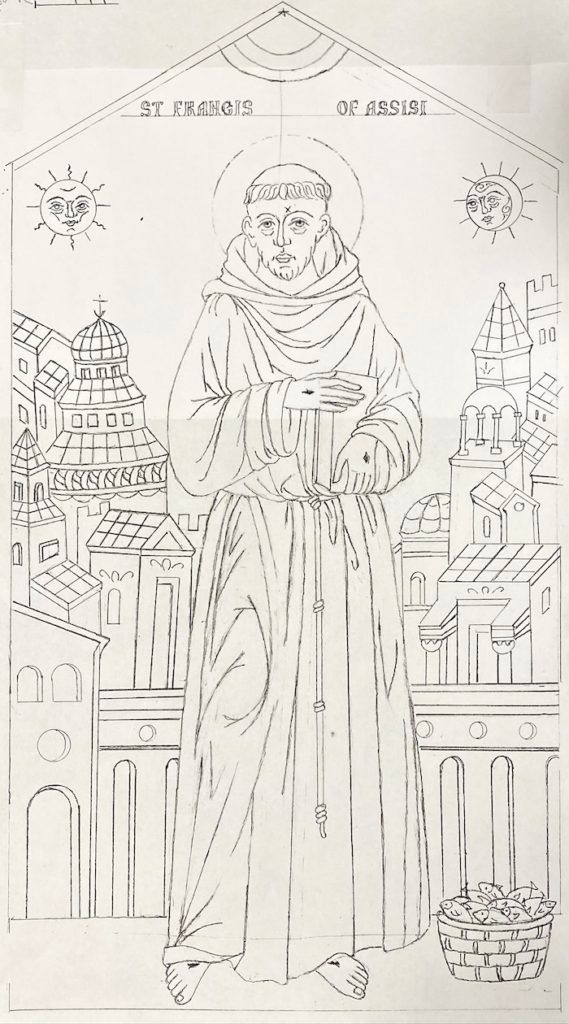
Drawing of St. Francis for the St. Elizabeth Icon Studio
Recommended Reading: If you plan to paint an icon of St. Francis, I strongly encourage you to learn as much as you can about the saint before you begin your work. You can do this through reading and prayer. Many books are available about his life and teachings. Among my favorites are Francis and Jesus by Murray Bodo and Eager to Love: The Alternative Way of Francis of Assisi by Richard Rohr. Both authors are Franciscan priests.
